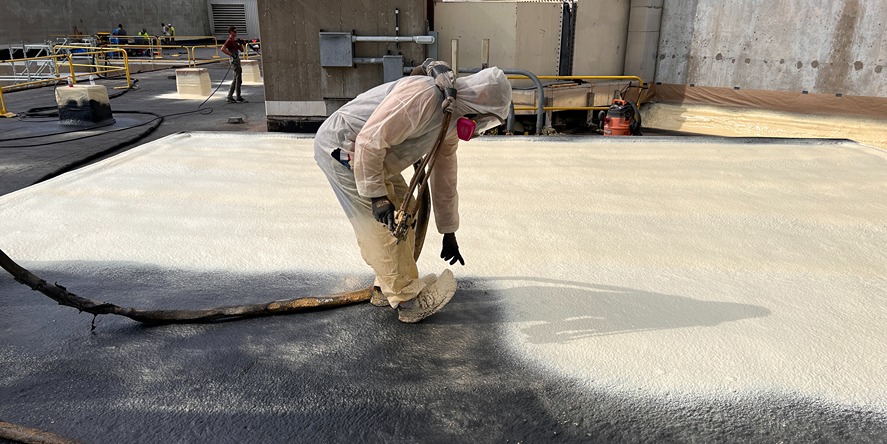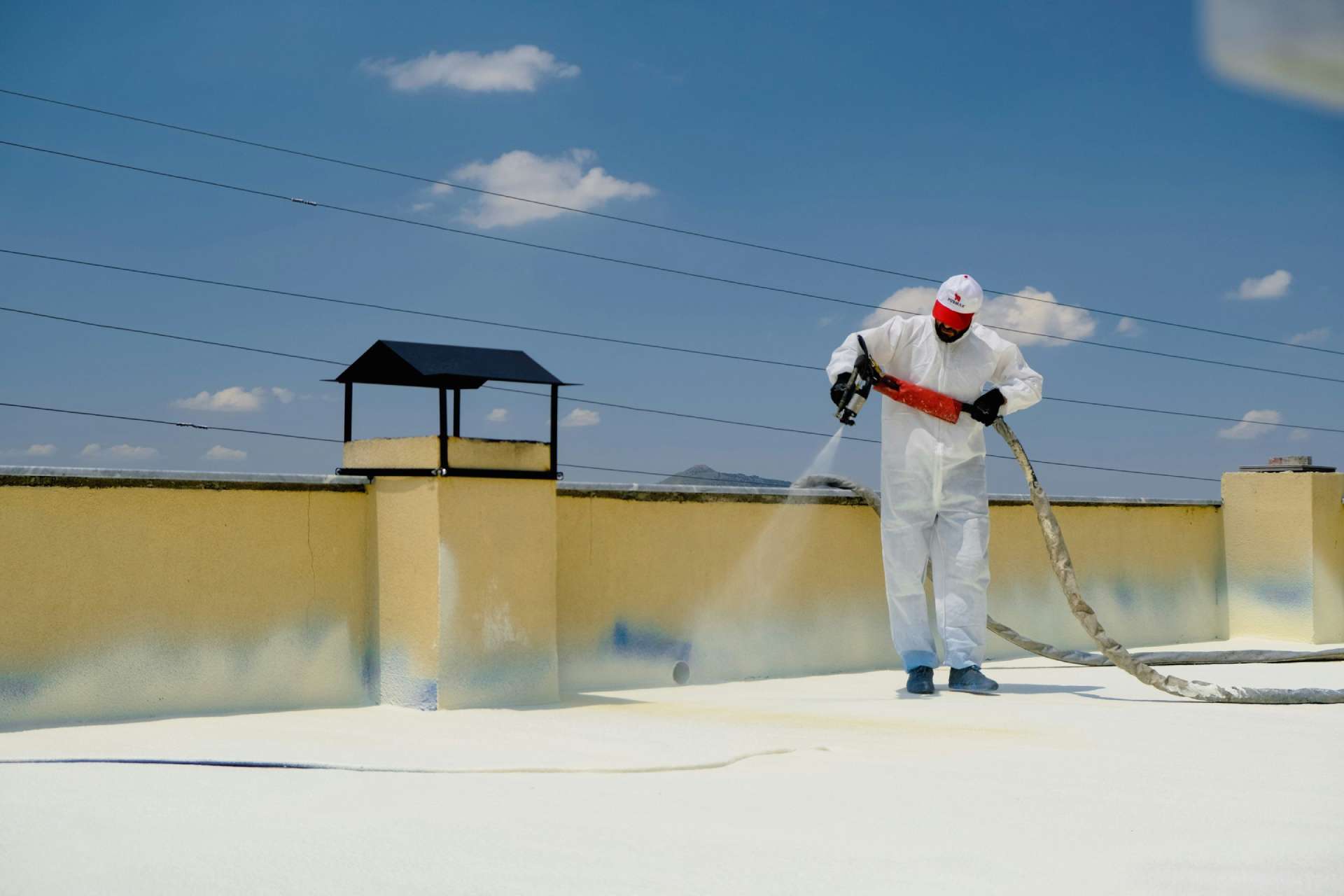Spray foam roofing offers much more than basic water protection. Beyond sealing out rain and moisture, spray polyurethane foam (SPF) roofs provide thermal insulation, structural reinforcement, air sealing, energy savings, and even acoustic dampening. These multi-dimensional benefits make SPF roofing a smart option for property owners focused on performance, sustainability, and long-term value.
This article breaks down all the practical advantages of spray foam roofing beyond its weatherproofing function. You’ll find comparative insights, data tables, technical specifications, and decision-making guidance based on real-world considerations—not just theory.
Core Benefits of Spray Foam Roofing Beyond Weatherproofing
SPF roofing creates a seamless, monolithic layer that adheres directly to existing roof surfaces. This singular layer eliminates joints and gaps—common failure points in traditional roofing systems. But the real value extends well beyond waterproofing.
- High thermal resistance: SPF has one of the highest R-values per inch of any roofing insulation, reducing energy loss year-round.
- Structural reinforcement: Spray foam adds rigidity to the roof deck, increasing its resistance to wind uplift and minor movement.
- Air sealing: The foam closes gaps and cracks, blocking unwanted air exchange and enhancing indoor climate control.
- Durability: Properly applied SPF roofing can last 30+ years with basic maintenance.
- Sound dampening: Reduces noise from rain, hail, or nearby external sources.

Comparative Analysis of Roofing Systems
| Feature | Spray Foam Roofing | Modified Bitumen Roofing | Built-Up Roofing (BUR) |
| Seam Presence | Seamless | Multiple seams and layers | Many seams |
| R-Value per Inch | R-6.0 to R-6.5 | R-2.5 to R-4.0 | R-2.0 to R-3.5 |
| Air Leakage Resistance | Excellent | Moderate | Poor |
| Energy Savings Potential | High | Low to Moderate | Low |
| Structural Strength Contribution | Yes | No | Minimal |
| Lifespan with Maintenance | 30+ years | 15–20 years | 10–20 years |
| Weight Load | Lightweight (1–1.5 lbs/ft²) | Moderate | Heavy |
| Application Versatility | Any shape or slope | Mostly flat | Flat only |
Market Fact
The U.S. Department of Energy reports that spray foam insulation, including roofing applications, can reduce heating and cooling costs by up to 30%, depending on climate and building envelope conditions.
Technical Specifications
| Specification | Value/Range | Notes |
| Closed-Cell Content | ≥ 90% | Ensures moisture resistance and strength |
| Density | 2.7–3.0 lb/ft³ | Medium density ideal for roofing applications |
| R-Value | R-6.0 to R-6.5 per inch | Industry-leading thermal performance |
| Compressive Strength | 50–60 psi | Reinforces deck, resists mechanical pressure |
| Tensile Strength | 40–60 psi | Withstands tension and mechanical stress |
| Water Absorption | <1% | Prevents water penetration and mold growth |
| UV Reflectivity (with coating) | 80–90% | White or reflective coatings improve solar performance |
| Fire Rating | Class A with coating | Meets most commercial building code requirements |
Added Performance Benefits
Energy Efficiency and Cost Reduction
SPF roofing improves energy efficiency by minimizing both conductive and convective heat transfer. Because it’s both insulation and an air barrier, SPF eliminates most paths for heat to escape or enter a structure. This significantly lowers HVAC loads.
- Reduces seasonal energy peaks
- Improves indoor comfort
- Lowers utility bills in both hot and cold climates
Bonus Tip: Combine SPF with a reflective white topcoat to reflect up to 85% of solar radiation, reducing roof surface temperatures by 30–40°F.
Structural Support and Durability
Once cured, spray foam becomes rigid and strong. It reinforces aging roof decks and helps extend the usable life of structures with minimal added weight. This characteristic is especially valuable in hurricane- or wind-prone regions.
- Increases roof deck stiffness
- Improves wind uplift resistance
- Fills in minor imperfections or dips
Bonus Tip: SPF can act as a secondary barrier in seismic areas by bridging movement without cracking or delaminating.
Air Sealing and Moisture Control
SPF forms a continuous layer that blocks air infiltration far more effectively than most traditional roof systems.
- Prevents conditioned air loss
- Reduces humidity-related issues inside
- Stops mold-prone condensation zones from forming
This feature also reduces the load on ventilation systems and helps maintain indoor air quality.
Noise Reduction and Comfort
SPF significantly reduces airborne noise, especially rain and mechanical outdoor sounds. For buildings near airports, highways, or industrial zones, this creates a quieter and more usable interior environment.
Things to Consider Before Making a Decision

Before opting for a spray foam roof, weigh the following key variables:
- Substrate condition: The existing roof must be dry and structurally sound. Moisture or decay below the surface should be remediated before application.
- Climate region: SPF performs exceptionally well in both hot and cold climates but may need specific coating types in high UV regions.
- Building use: SPF is well-suited to data centers, warehouses, commercial properties, and homes with high energy usage.
- Maintenance access: SPF roofs are walkable, but in areas with frequent roof traffic, added protection layers may be necessary.
- Contractor certification: Application quality is critical. Choose installers certified by the SPFA or other industry-recognized organizations.
Common Questions
Can spray foam be applied over an existing roof?
Yes. SPF can be installed over metal, asphalt, BUR, and even wood, provided the surface is clean and dry. This reduces tear-off costs and landfill waste.
How long does spray foam roofing last?
With periodic recoating every 10–20 years, SPF roofs can last over 30 years. Regular inspections extend performance and delay major repairs.
Is spray foam roofing safe?
Once cured, SPF is inert and safe. During installation, however, ventilation is critical to dissipate any chemicals from the spraying process.
Will birds or pests damage the foam?
Properly coated foam is not attractive to pests. Exposed foam should be avoided, but with quality coatings, animal damage is rare.
What coatings are used over SPF?
Common coatings include silicone, acrylic, or urethane. These add UV protection and are often selected based on climate conditions.
Spray Foam Roofing FAQ
Is it environmentally friendly?
Yes. SPF reduces energy consumption, lowers emissions, and minimizes roofing waste over time due to its extended life cycle.
Can you walk on it?
Yes. SPF roofs can support foot traffic when cured and coated, but high-traffic areas should have additional protection pads.
What happens if the coating wears off?
Recoating is required every 10–20 years, depending on environmental exposure. Neglecting this step can lead to UV degradation.
How does spray foam handle ponding water?
Although SPF resists water, prolonged ponding can degrade coatings over time. Proper drainage should be ensured during installation.
What is the average installation time?
Most SPF roofs are installed within 1–3 days, depending on size and substrate preparation requirements.
Make the Right Decision
Spray foam roofing stands out for its multi-functional performance. While it delivers reliable waterproofing, its true value is in thermal efficiency, structural enhancement, and energy cost reduction. It also helps improve air quality, comfort, and long-term durability—all while being relatively lightweight and adaptable.
Evaluate your current roof structure, local climate conditions, energy usage patterns, and budget. If your goals align with long-term energy savings, reduced maintenance, and added performance features, SPF roofing could be the best fit for your building.
Author and Reviewer:
Author: Bob Gasca attended his first spray foam training in 2007 and has continued to pursue yearly training to stay current with the latest technology and practices. He is a certified Spray Foam Master Installer through the SPFA and a member of the SPFA. Additionally, Bob serves as a Spray Foam Worldwide Ambassador, sharing information with spray foam professionals globally. Recently, he returned from a building science training, where he expanded his knowledge on how weather conditions affect home performance, helping him better diagnose and improve home health for families. Bob specializes in finding solutions to complex moisture and air infiltration issues.
Reviewer: Noah Gonzalez reviewed this article and drew on 9 years of experience to offer suggestions that make the guidance more directly useful for insulation contractors.

